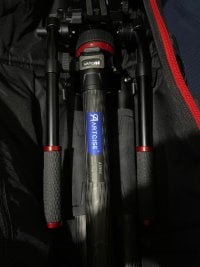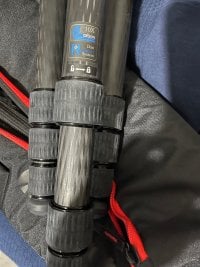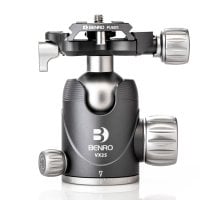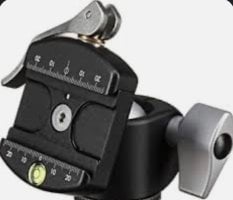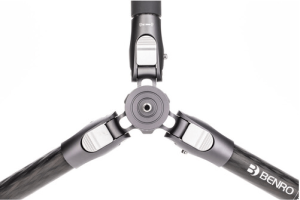Almost twenty years ago I bought a Manfrotto 055 PROB tripod. I was just about 150 Euros with a head and it was very tall. 150cm without the center column extended. I took it on all vacations and it was very sturdy even at long exposures at 200mm. It gave me so many great photos. I love that is only has three sections, it has quick release plates and you unlike most tripods you can attach a strap to it. So I do not need a bag, which is very comfortable.
There is one downside though that I feel more and more the older I get: The weight. It weighs 3.665 kilos with the head and the strap. That also gets me into trouble when travelling in economy class.
So I wondered if I should buy a lighter tripod. After having watched dozens of tripos reviews, I found that the Benro Rhino 24C with the VX25 head seems to be the best compromise for me. It weighs just 1.74 kilos. That is less than half the weight of the Manfrotto. That is a HUGE difference when carrying it around.
I wonder though if it will still be as sturdy as the heavy Manfrotto. On paper the Benro can support 18 kilos, while the Manfrotto is rated for half as much or less, but I wonder if that light Benro tripod really is as sturdy as that Manfrotto tank. I only watched single reviews of those tripods and never a comparison between those two. The Manfrotto also has three screws to attach the head even tighter, while the head of the Benro only seems to be attached by the single screw in the center. Also having four sections should be less sturdy than three sections. Would I regret losing some hieght? Can I be sure that buying the Benro would not be a step back?
The Benro is on the left, while the twenty year old Manfrotto is on the right:
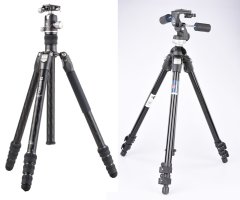
Another problem with the Benro is that it is not as tall as the Manfrotto. So to get it on my eye level I might have to extend the center column a bit. There is a taller version of the Benro, but that one only is 5 or 6 centimetres taller, but 300 grams heavier.
The Benro also has some advantages. You could convert one leg into a monopod and the head allows panoramas even when the tripod does not stand straight. That is a huge advantage compared to the Manfrotto.
For me that is a very difficult decision. Would I regret retiring my beloved old heavy tripod or would the weight difference make my life so much better? Would I regret no longer having quick release plates? Would it annoy me to extend four sections instead of three? Would I regret having a ball head instead of that three way head that gave me so much more control?
Next month I will go on a journey to six countries. Then I should better have taken the right decision. What would you do?
There is one downside though that I feel more and more the older I get: The weight. It weighs 3.665 kilos with the head and the strap. That also gets me into trouble when travelling in economy class.
So I wondered if I should buy a lighter tripod. After having watched dozens of tripos reviews, I found that the Benro Rhino 24C with the VX25 head seems to be the best compromise for me. It weighs just 1.74 kilos. That is less than half the weight of the Manfrotto. That is a HUGE difference when carrying it around.
I wonder though if it will still be as sturdy as the heavy Manfrotto. On paper the Benro can support 18 kilos, while the Manfrotto is rated for half as much or less, but I wonder if that light Benro tripod really is as sturdy as that Manfrotto tank. I only watched single reviews of those tripods and never a comparison between those two. The Manfrotto also has three screws to attach the head even tighter, while the head of the Benro only seems to be attached by the single screw in the center. Also having four sections should be less sturdy than three sections. Would I regret losing some hieght? Can I be sure that buying the Benro would not be a step back?
The Benro is on the left, while the twenty year old Manfrotto is on the right:

Another problem with the Benro is that it is not as tall as the Manfrotto. So to get it on my eye level I might have to extend the center column a bit. There is a taller version of the Benro, but that one only is 5 or 6 centimetres taller, but 300 grams heavier.
The Benro also has some advantages. You could convert one leg into a monopod and the head allows panoramas even when the tripod does not stand straight. That is a huge advantage compared to the Manfrotto.
For me that is a very difficult decision. Would I regret retiring my beloved old heavy tripod or would the weight difference make my life so much better? Would I regret no longer having quick release plates? Would it annoy me to extend four sections instead of three? Would I regret having a ball head instead of that three way head that gave me so much more control?
Next month I will go on a journey to six countries. Then I should better have taken the right decision. What would you do?

